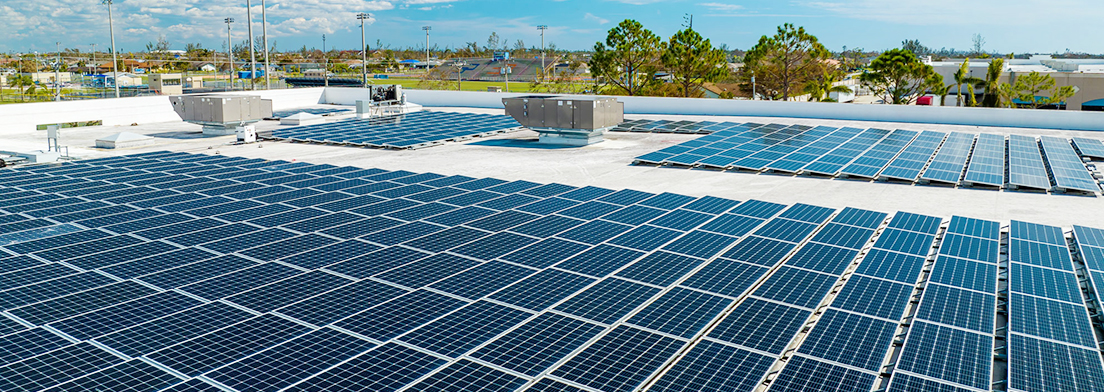Flat roof solar mount systems are becoming increasingly popular due to their flexibility, cost-effectiveness, and ease of installation. Among the various pv mounting options, ballasted solar systems stand out as a preferred choice for flat roofs because they don't require roof penetration. However, optimizing these systems for wind resistance is critical to ensure durability and energy efficiency, especially in regions with high wind speeds.
In this guide, we’ll explore effective strategies and considerations to maximize the wind resistance of ballasted solar panel mounting systems.
Ballasted solar panel mounting bracket systems rely on weight to keep the solar panels and mounting structures securely in place. When wind loads exert uplift or lateral forces, these systems must resist those forces without compromising the roof's integrity or the system's alignment.
Key challenges include:
· Uplift Forces: Wind can create lift under solar panels, potentially dislodging them.
· Lateral Forces: Strong gusts can push against the panels, shifting the system.
· Edge Effects: Panels near roof edges face stronger wind forces due to vortex effects.

Conducting a thorough wind load analysis for the installation site is crucial. Factors to consider:
· Local wind speed and direction.
· Roof height and surrounding structures.
· Building exposure category (e.g., urban vs. open terrain).
Using software tools or consulting with structural engineers can help design a system tailored to the site’s specific wind conditions.
Panel Orientation:
· Orient panels parallel to prevailing wind directions to reduce drag and uplift forces.
· Avoid tilting panels at angles that could amplify wind pressure.
Edge and Corner Zone Reinforcement:
· Add extra ballast or anchoring mechanisms near roof edges and corners where wind loads are highest.
· Use aerodynamic wind deflectors or baffles to minimize vortex effects.
· Distribute ballast weights evenly across the system while concentrating additional weight in high-stress areas.
· Ensure the ballast doesn’t exceed the roof’s load-bearing capacity.
Modern ballasted systems incorporate aerodynamic designs that reduce wind uplift. Features include:
· Low-Profile Designs: Minimize the surface area exposed to wind.
· Integrated Deflectors: Redirect airflow to reduce pressure.
Invest in durable materials resistant to weathering and corrosion. Components like clamps, rails, and ballast trays should be designed to withstand prolonged exposure to wind and other environmental factors.
Wind can loosen connections and shift ballast over time. Schedule periodic inspections to ensure:
· Ballast weights remain securely in place.
· All hardware, including clamps and brackets, is tight and corrosion-free.
· Panels and mounts show no signs of displacement or damage.
A well-optimized ballasted solar system offers:
· Enhanced Safety: Prevents accidents caused by dislodged panels.
· Longevity: Reduces wear and tear on components, extending the system’s lifespan.
· Maximized Efficiency: Ensures panels remain correctly aligned for optimal energy production.
· Lower Maintenance Costs: Minimizes repairs and adjustments due to wind damage.
Optimizing ballasted solar systems for wind resistance is essential for achieving long-term performance and safety. By carefully analyzing wind loads, designing for site-specific conditions, and investing in high-quality materials, you can ensure your flat roof solar installation withstands even the harshest weather conditions.
At Xiamen TopFence Co.,Ltd, we specialize in durable and aerodynamic ballasted solar mounting systems that provide superior wind resistance. Contact us today to discuss your project and find the perfect solution for your flat roof solar needs!

 Xiamen TopFence Co.,Ltd.
Xiamen TopFence Co.,Ltd. No. 77, LingXia South Road, Huli District, Xiamen City, Fujian, China
No. 77, LingXia South Road, Huli District, Xiamen City, Fujian, China Tel: +8613365923720
Tel: +8613365923720
 Email: info@xmtopfence.com
Email: info@xmtopfence.com
 IPv6 network supported Sitemap
| XML
| Blog
| Privacy Policy
IPv6 network supported Sitemap
| XML
| Blog
| Privacy Policy


